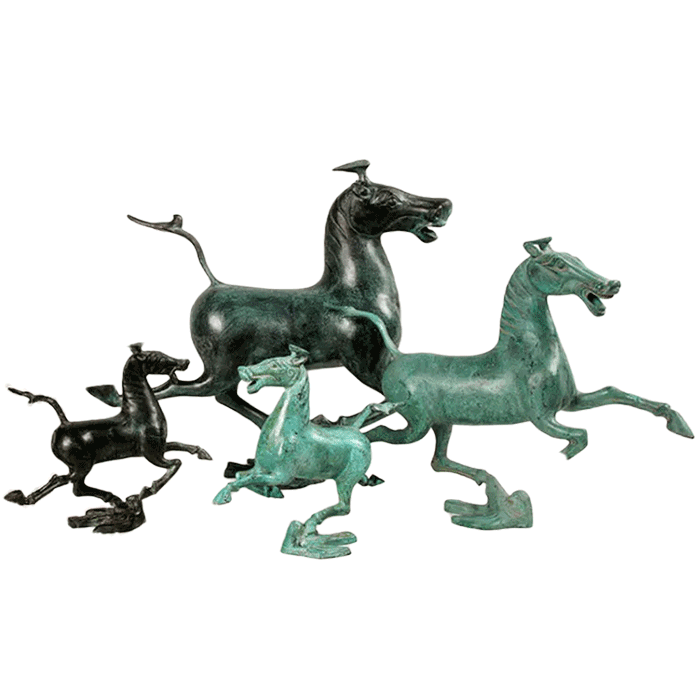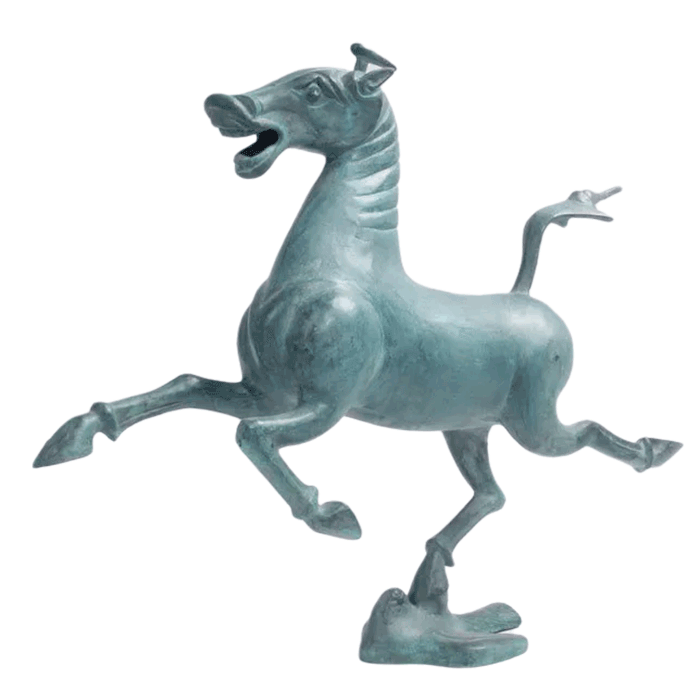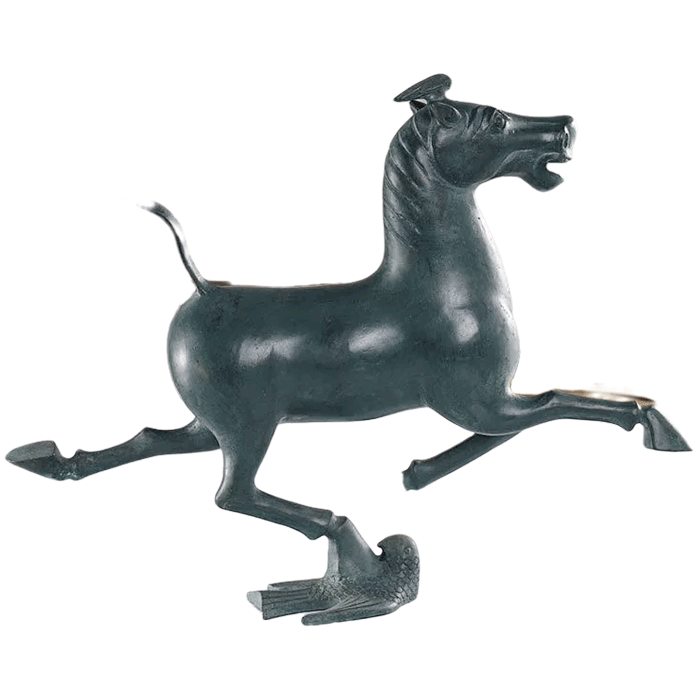Ancient Chinese Bronze - Bronze Galloping Horse
The Eastern Han bronze galloping horse, also known as the Ma Chaolongque, the horse stepping on the flying swallow, and the bronze galloping horse, is an Eastern Han bronze ware. The Eastern Han bronze galloping horse was identified as a Chinese tourism symbol by the National Tourism Administration in October 1983, and was designated as a national treasure-level cultural relic in 1986.

Cultural relic features
The Eastern Han bronze galloping horse is 34.5 centimeters tall, 45 centimeters long, 13 centimeters wide, and weighs 7.15 kilograms. The horse held its head high and neighed, the trunk was strong and the limbs were slender, the legs and hoofs were light and hooves, the three feet flew in the air, galloped forward, and stepped on the flying swallow with one foot.
The galloping horse is in good shape, with its head held high, its tail raised, its mouth neighing, and it gallops forward with a rare "opposite trot" footwork, with three legs in the air, and a bird treading on its right hind hoof. The bird spreads its wings and looks back, supports the galloping horse, and becomes the pedestal. The horse's head is small and handsome, the neck is long and curved, the chest is broad and thick, the body is thick, the hips are round, and the limbs are slender, all of which are the standard of what is commonly called a thousand-mile horse, and it is also the style (demonstration) of people at that time. The flying bird stepping under the hooves of the galloping horse, with its wings ready to fly, is looking back in amazement, echoing the slightly left-leaning horse's head.

creative skills
The Eastern Han bronze galloping horse used a highly realistic technique in its creation. In the pre-Qin era in China, sculpture, especially pure sculpture, was not a major art. Bronze sculpture mainly exists in the form of mimetic or partial decoration.
In terms of modeling method, the pattern of bronze ware is also highly decorative and poor in realism. At this point, it is completely different from the ancient Greek and Roman sculpture modeling methods. In the Han Dynasty, although it is not as tall and detailed as the Qin Dynasty, it still maintains a considerable realism. Compared with the quietness of the Qin Dynasty sculpture, it has a more sense of movement. The same is true for the bronze galloping horses of the Eastern Han Dynasty. The proportions are well-proportioned and the shape is precise. Although there are not too many details, it generally conveys its basic shape and momentum.
Cultural Relics Appreciation
Regarding the name of this horse, many experts have named it from different angles, and finally named it the Eastern Han Dynasty Bronze Galloping Horse, which is also a recognized name.
The bird-shaped pedestal used for bronze galloping horses in the Eastern Han Dynasty is also a creation in art. While fixing the galloping horse, the maker combines the practical function of the base with artistic creation. This bold and ingenious approach adds to the artistic effect of the work.
The Eastern Han bronze galloping horse is a fine work of bronze art in the Eastern Han Dynasty. The shape of the bronze galloping horse in the Eastern Han Dynasty actually followed the image of the galloping horse that was popular at that time, and creatively added flying birds, which not only played a fixed role in practice, but also increased the momentum of the horse galloping. However, it is different from the creation of modern individual artists, but a stylized creation mode, which follows the shape of the galloping horse that was popular at the time, and adds bird-shaped objects under the horse's feet to support stability. kind of creation. On the whole, the bronze galloping horse in the Eastern Han Dynasty is a manifestation of the brave and heroic spirit and high-spirited outlook of the people of the Han Dynasty, reflecting the strength of the Han Dynasty.

The bronze galloping horse in the Eastern Han Dynasty is a bronze handicraft with important value produced under the influence of the custom of Shangma in the Han Dynasty.
The ancient Chinese craftsmen used the artistic technique of combining realism and romanticism, with rich imagination, ingenious conception, and skilled craftsmanship, to combine the galloping horse and the flying bird wonderfully, and the swift flying bird set off the galloping horse's beauty. The speed is not only vivid and lively, but also cleverly makes the center of gravity of the galloping horse focus on the birds under the hooves, and condenses the galloping horse's uninhibited momentum with the flat and stable mechanical structure. The momentum is also a symbol of the Chinese nation.









